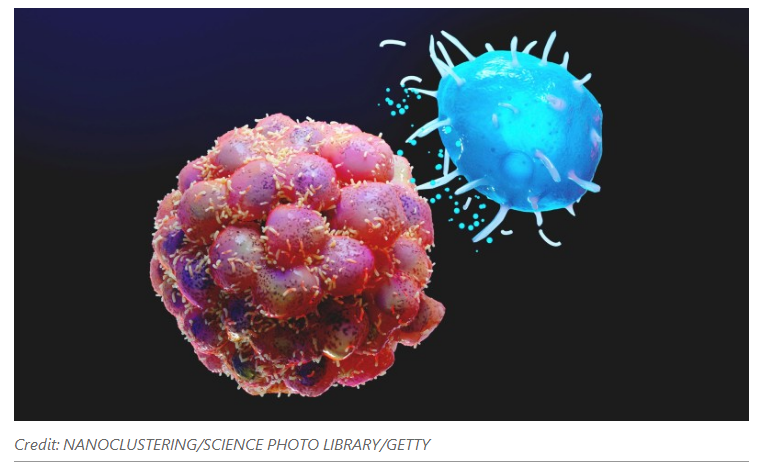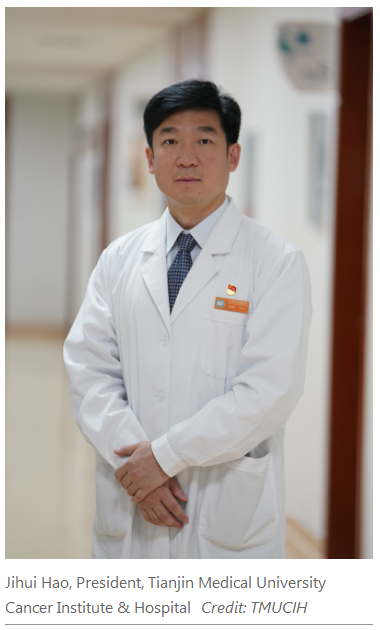Tackling cancer through innovation
Tianjin Medical University Cancer Institute & Hospital celebrates its 160th anniversary by reaching new heights in cancer treatment, research, and training.

With a motto of combining medical excellence with innovative thinking, Tianjin Medical University Cancer Institute & Hospital (TMUCIH) is a world-leading cancer centre that integrates treatment, teaching, research, health maintenance and disease prevention. It embraces new technologies and approaches, and places a premium on recruiting top talent around the world, to ensure patients have the best care and treatment.
Birthplace of oncology in China
Founded in 1861, the institution began as the British Army Hospital. Under the leadership of the late distinguished tumour expert, Xianzhai Jin, the hospital established the first oncology department in China in 1952, and later transformed into a specialist cancer hospital.
Now with 48 clinical and diagnostic departments, and 13 basic research departments, the institution is one of the largest specialized hospitals in China. In 2013, it was designated a National Clinical Research Centre for Cancer by China’s Ministry of Science and Technology. 2017 saw the establishment of the National Oncology Specialty Alliance, of which TMUCIH is a member, in conjunction with 51 hospitals in China. With the construction of national clinical medical research centres, a collaborative research network consisting of 8 sub-centres, more than 30 regional centres, and more than 100 network members has been formed nationwide.
Thinking outside the box
The institution is continually improving its clinical solutions and practices through innovation. TMUCIH president Jihui Hao says, “Our hospital is home to innovative research platforms, which promote the integration of basic and clinical research, as well as new technologies and models for diagnosis and treatment.”
In recent years, TMUCIH researchers have had a particular focus on the epigenetic, microenvironment, and immune regulation of tumour development. They found that immune inhibition combined with inflammatory promotion plays a major role in the formation of malignant phenotypes.
In another study, the team screened a number of biomarkers and revealed a molecular mechanism that may improve the efficacy of immunotherapy, and provide new targets and ideas for solving immunotherapy drug resistance.

Another research priority is the development of new treatment plans and drugs, including immunotherapy and cancer vaccines. For example, as Hao points out, the institute led a multicentre study on postoperative adjuvant therapy by 16 medical institutions in China to compare postoperative targeted therapy to chemotherapy for stage IIIA non-small cell lung cancer (NSCLC) patients with epidermal growth factor receptor (EGFR) mutations, and took the lead in proposing a new protocol of EGFR-tyrosine kinase inhibitors (TKI) for postoperative adjuvant therapy for non-small cell lung cancer patients with EGFR mutations.
The institution is also a proponent of artificial intelligence (AI) in research. For example, an innovative diagnosis model for thyroid cancer was developed by TMUCIH’s research teams using an AI-led analysis of thyroid ultrasound data of 50,000 individuals. “The accuracy and specificity of the model are significantly higher than that of imaging experts, while its sensitivity is close to that of imaging experts,” adds Hao.
Putting people at the centre
Despite its innovations and technological advancements, people remain at the heart of what the institution does. This can be seen in its efforts to establish cancer screening models that recognize particular Chinese characteristics, to increase the chances of early diagnosis and survival. In particular, a guideline for breast cancer screening in Chinese women was formulated based on data from two decades of screening 1.26 million people from more than 30 provinces. Since 2017, the hospital has also carried out a pilot joint screening project for common cancers — lung, breast, stomach and liver — for more than 150,000 Tianjin residents.
Looking forward, Hao stresses that TMUCIH will continue its people-oriented approach through several exciting projects. “We will take our 160th anniversary as a fresh step forward to embrace new thinking and developments, while remembering our history and people-centred philosophy.” In the next few years, the hospital will build a translational medicine and individualized cancer treatment research centre, which will have laboratory space for around 100 researchers. It will also continue to attract global talent by providing support in terms of funding, manpower and space.
TMUCIH Achievements
1954
Commissioned by the Ministry of Health to create a National Oncologist Training Course and a Pathologist Training Course.
1963
Established the Tianjin Medical Journal Oncology Supplement, the first Chinese medical journal of oncology. It was later renamed Chinese Clinical Oncology.
1984
The Chinese Anti-Cancer Society was established under the initiative of Xianzhai Jin
1998
The Department of Oncology designated a 211 key discipline
2001
The Department of Oncology approved as a key discipline of the State Ministry of Education.
2013
Designated as a National Clinical Research Centre for Cancer in 2013, and established a collaborative research network including 8 sub-centres, 20 regional centres and many primary hospitals.
2017
Awarded the National Development and Reform Commission and the National Health Planning Commission's National Project for the Improvement of Diagnostic and Treatment Capability of Difficult Diseases construction project. Also, the Basic and Clinical Tumor Discipline Cluster was recognized as a national first-class discipline.
Link:https://www.nature.com/articles/d42473-021-00452-5